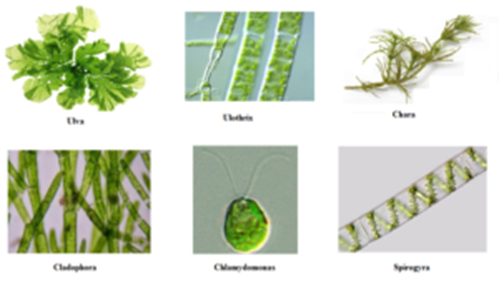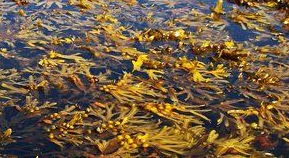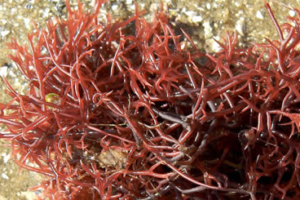In this article, we shall study the characteristics and examples of Division Thallophyta. (Greek – Thallus – plant body without root, stem, and leaves; phyton – a plant)
Characteristics of Division Thallophyta:
- Members of division Thallophyta are the most primitive and simple plants. The plant body is not differentiated into root, stem, and leaves. They are in the form of an undivided thallus. This group is commonly called algae (Latin- algae – seaweed).
- They have cellulose cell walls around their cells.
- The size and form of algae range from the microscopic unicellular forms like Chlamydomonas to colonial forms like Volvox and to the filamentous forms like Ulothrix and Spirogyra. A few of the marine forms such as kelps are massive plant bodies.
- algal cells are covered by mucilage. It protects the thallus from desiccation, epiphytic growth and from decaying underwater.
Habitat:
- They are mostly aquatic (both freshwater and marine) organisms. They may occur in other habitats: moist stones, soils, and wood. Some of them also occur in association (symbiotic relation) with fungi (lichen) and animals (e.g., on sloth bear).
Tissues:
Due to aquatic habitat, water conduction is not required. Hence the vascular tissues (xylem and phloem) are absent. Mechanical tissues are absent. Hence the thallus is flexible. It can sway with the tides without being torn.
Nutrition:
Algae are chlorophyll-bearing, simple, thalloid, autotrophic. Chloroplast and chromatophores have photosynthetic pigments such as chlorophyll-a, carotenes, and xanthophylls. Other photosynthetic pigments such as red, brown, blue-green and purple may be present. These pigments form the basis of further classification of algae.
Reproduction:
Vegetative Reproduction:
Vegetative reproduction is by fragmentation. Each fragment develops into a thallus.
Asexual Reproduction:
Generally, asexual reproduction takes place by motile or non-motile spores (zoospores). They are flagellated (motile) and on germination gives rise to new plants. There are two types of spores. Mitospores are produced by mitosis and meiospores produced by meiosis.
Sexual Reproduction:
Sex organs are simple, single-celled and there is no embryo formation after fertilization. Sexual reproduction takes place through the fusion of two gametes.
- Isogamous Type: The gametes can be flagellated and similar in size (as in Chlamydomonas) or non-flagellated (non-motile) but similar in size (as inSpirogyra). Such reproduction is called isogamous. The gametes are morphologically similar but physiologically different.
- Anisogamous Type: Fusion of two gametes are morphologically similar but dissimilar in size, as in some species of Chlamydomonas (Chlamydomonas sp)) is termed as anisogamous. The larger passive gamete is called microgamete and smalle active gamete is called microgamete.
- Oogamous Type: Fusion between one large, food laden, non-flagellated, non-motile (static) female gamete (egg or oosphere) and a smaller, flagellated, motile male gamete (sperm or spermatozoid or antherozoid) is termed oogamous, e.g., Volvox, Fucus.
Alternation of Generation:
- It may or may not be present. The life cycle may be haplontic (having a life cycle in which the main form is haploid, with a diploid zygote being formed only briefly.), diplontic (having a life cycle in which the main form, except for the gametes, is diploid.) or diplohaplontic (having a life cycle in which full-grown haploid and diploid forms alternate).
Examples of Division Thallophyta:
- Green algae – Ulothryx, Cladophora, Spirogyra, Ulva, and Chara;
- Red algae – Batra, Polysiphonia;
- Brown algae – Laminaria, Fucus, Sargassum
Algae:
The term algae was coined by Linnaeus for seaweeds. There are about 30000 species of algae.
Importance of Algae:
- At least half of the total carbon dioxide fixation on earth is carried out by algae through photosynthesis.
- Being photosynthetic they increase the level of dissolved oxygen in their immediate environment.
- They are primary producers of energy-rich compounds which form the basis of the food cycles of all aquatic animals.
- Many species of Porphyra, Laminaria and Sargassum are among the 70 species of marine algae used as food.
- Certain marine brown and red algae produce large amounts of hydrocolloids (water-holding substances), e.g. algin (brown algae) and carrageen (red algae) which are used commercially.
- Agar, one of the commercial products obtained from Gelidium and Gracilaria are used to grow microbes and in preparations of ice-creams and jellies.
- Chlorella and Spirulina are unicellular algae, rich in proteins and are used as food supplements even by space travelers.
Classification of Algae:
Chlorophyceae:
- They are commonly called green algae.
- Mostly they are found in freshwater.
- The plant body may be unicellular, colonial or filamentous.
- They contain pigments chlorophyll a and b, hence they are grass green in colour.
- The shape of chlorophyll may be discoid, plate-like, reticulate, cup-shaped, spiral or ribbon-shaped in different species.

- They have storage bodies located in the chloroplasts called pyrenoids. Pyrenoids contain protein and starch. Some algae may store food in the form of oil droplets.
- Their cells have a rigid cell wall made of an inner layer of cellulose and an outer layer of pectose.
- Vegetative reproduction usually takes place through fragmentation. Asexual reproduction is by flagellated zoospores produced in zoosporangia. Sexual reproduction may be isogamous, anisogamous or oogamous.
- Some examples are Chlamydomonas, Volvox, Ulothrix, Spirogyra, and Chara
Phaeophyceae:
- They are commonly called brown algae.
- Primarily they are marine algae.
- The plant body may be simply branched, filamentous as in the case of Ectocorpus and highly branched as in the case of kelps, which may reach a height of 100 metres.
- They possess chlorophyll a, c, carotenoids, and xanthophylls. Depending upon the amount of the xanthophyll pigment, fucoxanthin present in them, their colour varies from olive green to various shades of brown.

- The cells have a cellulosic wall usually covered on the outside by a gelatinous coating of algin. The protoplast contains, in addition to plastids, a centrally located vacuole and nucleus.
- They have storage bodies located in the chloroplasts called pyrenoids. Pyrenoids contain protein and starch. Some algae may store food in the form of oil droplets.
- Food is stored as complex carbohydrates, in the form of laminarin or mannitol.
- Vegetative reproduction takes place through fragmentation. Asexual reproduction in most brown algae is by biflagellate zoospores. Sexual reproduction may be isogamous, anisogamous or oogamous. Union of gametes may take place in water or within the oogonium (oogamous species).
- Some examples are Ectocarpus, Dictyota, Laminaria, Sargassumand Fucus
Rhodophyceae:
- They are commonly called red algae because of the predominance of the red pigment, r-phycoerythrin in their body.
- Majority of the red algae are marine with greater concentrations found in the warmer areas.
- Most of the red algae are multicellular. Some of them have complex body organization.
- They contain a red pigment, chlorophyll-a, d and r-phycoerythrin in their body.
- The food is stored as Floridian starch which is very similar to amylopectin and glycogen in structure.

- Their cells have a rigid cell wall made of cellulose, pectin and polysulphate esters.
- The red algae usually reproduce vegetatively by fragmentation. They reproduce asexually by non-motile spores and sexually by non-motile gametes. Sexual reproduction is oogamous and accompanied by complex post-fertilization developments.
- Some examples are Polysiphonia, Porphyra, Gracilaria and Gelidium.
7 replies on “Division Thallophyta”
they are very usefull
Really awesome characterisation
Very good notes
This was really helpful
I found it very educative
its useful
really useful thanks
This was very educative,thank you very much